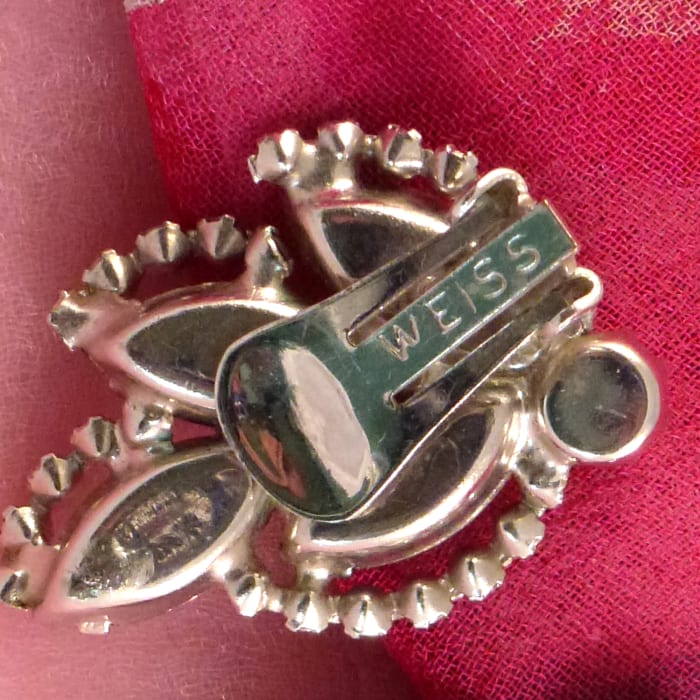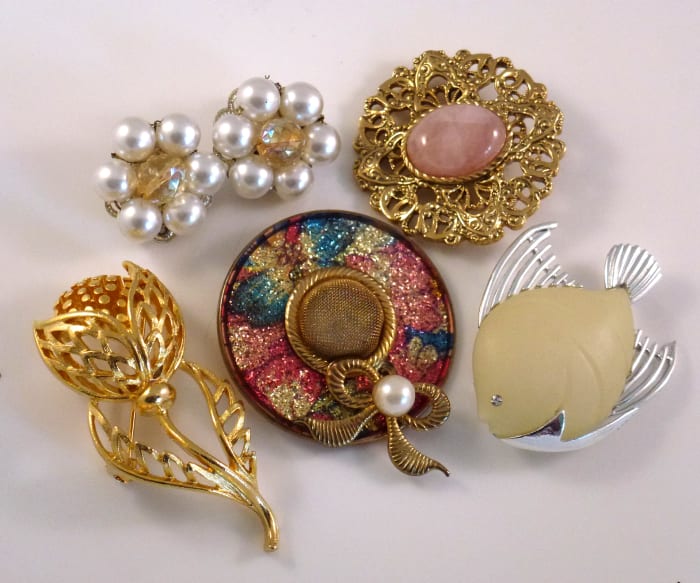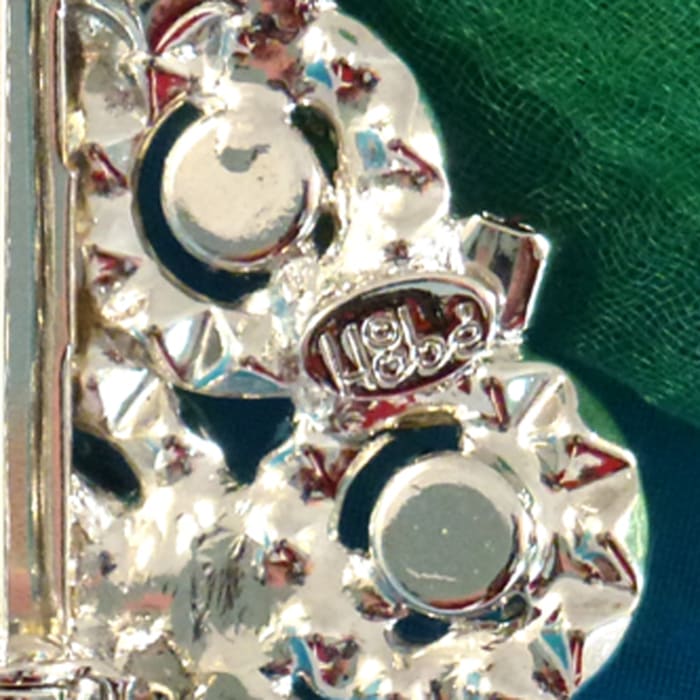With so much vintage costume jewelry on the market, how do you determine what to buy for a good investment? There are lots of categories of vintage jewelry, but let’s focus our search on rhinestone jewelry.
I’ve been dealing in vintage costume jewelry for more than a decade, and when I was first starting out I made quite a few mistakes. Let my experience help you take the mystery out of buying rhinestone jewelry so you don’t make the same mistakes I did.
When shopping for vintage rhinestone jewelry, condition is always your first concern. When you find a piece, pick it up, look it over, and ask yourself the following questions:
- Are there any missing rhinestones?
- Are there any replaced or chipped rhinestones?
- Are there any dark or yellowing rhinestones?
- Is there wear or chipping on the metal?
- Is there any green rust on the metal?
- Is the hardware (clasps, pin backs, clips, etc.) broken?
If you answered yes to any of the above questions, put the jewelry down and move on to something better.
If the jewelry has passed the condition test, then look at its design. Is it common and boring or is it a real eye-catcher?
Here’s another set of questions to ask:
- Are there different shapes and sizes of rhinestones?
- Are the rhinestones colorful?
- Is the setting interesting?
- Does the piece have just a few rhinestones or is it loaded?
Obviously, the more rhinestones the better! But rhinestones come in a variety of shapes and sizes, so make sure the piece is designed with more than just average round rhinestones. Look for unique shapes like teardrops, emerald cuts, and navettes. Rhinestones also come in a variety of types such as aurora borealis, frosted glass, striped glass, and molded glass. A piece with different shapes, sizes, and types of rhinestones will have more interest and value.
Another secret to buying vintage jewelry that sells well is knowing the difference between a quality-made piece and a cheaply made one. Look that piece over again and ask another round of questions:
- Are the rhinestones just glued in or are they prong set?
- Are the rhinestones glass or plastic?
- Are there any open backed rhinestones? (A hint that it’s a better piece.)
Better made pieces will obviously command more money than cheaper ones. You might want to take some time to learn how vintage costume jewelry was made. Not only is it interesting, but it will help you get more for your money! A reference book I highly recommend is “Costume Jewelry 101” by Julia C. Carroll. (After 10 years of collecting, I still refer to it!)

A signature is always a good thing on costume jewelry. This piece is signed Weiss.
Image courtesy of Linda Miller
One last important question you need to ask yourself: Is there a maker’s mark or hallmark on the back of the piece/Some designers are more desired than others. Names such as Weiss, Eisenberg, Regency, Hattie Carnegie, and Hobe are just a few that fetch good prices. Don’t be fooled into thinking that a piece has to be signed to be of any value. There were quite a few manufacturers that didn’t use a maker’s mark on all their jewelry lines and their jewelry is still highly collectible.
One word of caution about buying unmarked jewelry: If a seller tries to tell you an unmarked piece is from a certain designer, ask if they have verified that information and where they got their information from. One example that gets a lot of misuse is the Juliana line designed by DeLizza and Elster. Juliana jewelry is very sought after and many sellers will say a piece is Juliana when it obviously isn’t. I see this on websites all the time. If you want to invest in Juliana jewelry, I highly recommend you do some research on it. A wonderful book on the subject is “The Art of Juliana Jewelry” by Katerina Musetti. Juliana jewelry sells very well and is worth your time to investigate.
What isn’t worth your time?
If you’re looking to resell vintage costume jewelry, I would stay away from the following:
- Pieces with a lot of faux pearls
- Pieces with only a few rhinestones
- Pieces with a lot of white or clear rhinestones
- Pieces that have plastic rhinestones instead of glass
- Pieces with common, plain designs.
The market is flooded with this type of jewelry and it takes a long time to sell it. Colorful, well designed, and well-made jewelry is your best bet.
If you want to know current values and trends in the market place, a good place to research is on eBay. When you type in “vintage costume jewelry” in the search box and select completed listings, you will quickly learn what’s selling and what’s not and for what price.
I personally try not to spend more than $12 to $15 on a piece because I know I can usually double or triple my money on it (or at least break even if I’ve bought a dud). When you’re starting out, this may be a good rule to follow. As you learn more and are comfortable knowing you can still make a profit, then you can venture into the higher priced pieces.
Buying vintage costume jewelry can be a lot of fun and profitable when you know how. Now that you’ve got the inside scoop, it’s time to get out there and find those treasures! Good luck in your hunt!
You May Also Like:
Exploring Costume Jewelry Basics











